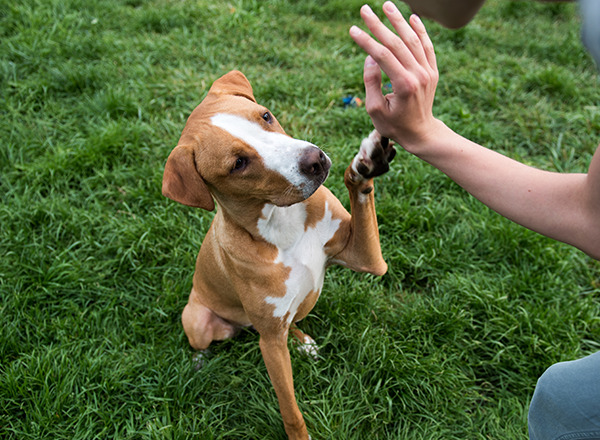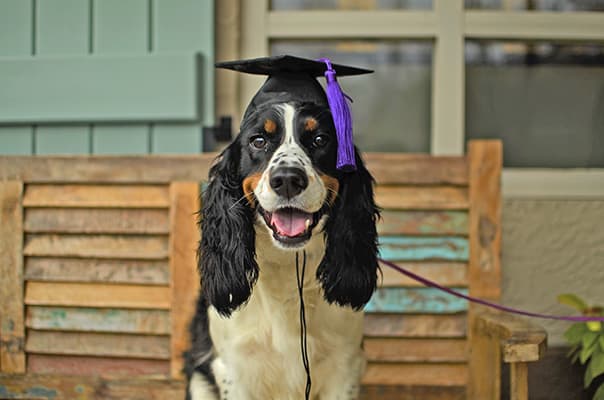Top Strategies for Effective Dog Training Techniques Every Pet Owner Should Know
Top Strategies for Effective Dog Training Techniques Every Pet Owner Should Know
Blog Article
Novice's Overview to Successful Pet Training at Home
Effectively educating a pet dog in the house requires a nuanced understanding of canine behavior and reliable interaction approaches. Developing clear training goals, utilizing high-quality rewards, and maintaining consistency across relative are crucial aspects. Integrating training into daily routines can boost both interaction and retention. Lots of amateur fitness instructors encounter challenges that might prevent progress. To browse these intricacies successfully, it's important to discover a number of vital facets that can transform your strategy and result in an unified connection with your family pet. What basic concepts should every beginner grasp to make certain success?
Understanding Canine Actions
Comprehending pet habits is necessary for effective training and fostering an unified partnership in between humans and their canine buddies. Pets connect mainly through body movement, vocalizations, and facial expressions, making it essential for owners to interpret these signals properly. Identifying actions such as tail wagging, roaring, or shrinking can give insights into a pet dog's mood and intents.

Common behavioral concerns, such as aggression, anxiety, or excessive barking, usually stem from misunderstandings or unmet demands. Observing and addressing these concerns quickly can protect against rise and make certain a favorable training experience. By promoting a deep understanding of pet dog actions, owners can tailor their training methods to match their canine buddies, eventually causing a mannerly and contented pet.
Vital Training Devices
A well-appointed training area can considerably enhance the effectiveness of pet training in the house. Vital training devices guarantee that both the canine and the trainer can take part in productive sessions that foster learning and bonding.

Buying a tough leash and a comfortable, well-fitting collar or harness is crucial for safety and control. These devices assist develop limits and ensure the canine stays protected throughout training. Furthermore, a marked training area, cost-free from diversions, aids focus for both the dog and the fitness instructor.
Educating aids such as training pads, cones, or dexterity equipment can likewise enhance the experience by introducing selection and challenges. Finally, having a note pad or electronic app for tracking progress can be vital, enabling you to keep in mind successes and locations for improvement. Utilizing these necessary tools will produce a favorable training setting and lay the foundation for effective discovering.
Developing an Educating Routine
Establishing a constant training regimen is crucial for effective canine training in your home. A well-structured regular not just aids in enhancing wanted behaviors but also offers your pet dog with a feeling of security and predictability. To create an effective training routine, begin by identifying specific training goals, such as fundamental commands, leash walking, or house-breaking.
Select an assigned time every day for training sessions, preferably when your pet dog is receptive and alert. Sessions should be brief, approximately 5 to 15 minutes, to maintain emphasis and stop exhaustion. Uniformity in timing and atmosphere will improve your canine's knowing experience.
Integrate training into everyday tasks to enhance skills. Practice commands throughout walks or mealtime, which incorporates finding out into natural regimens. In addition, stay flexible and readjust the regular as required, accommodating your pet's power levels and state of mind.
Favorable Reinforcement Techniques
Favorable reinforcement techniques are basic to efficient canine training, advertising preferred behaviors via benefits rather than penalty. This method makes use of positive stimuli, such as deals with, praise, or play, to urge pets to repeat specific activities. The cornerstone of this strategy is timing; benefits need to be provided right away following the preferred behavior to produce a clear organization.
When carrying out positive support, it is necessary to pick rewards that are inspiring for your dog. High-value deals with, such as small items of hen or cheese, can be especially effective throughout training sessions. Furthermore, differing the rewards can preserve your pet's interest and check over here interest.
Beginning with simple commands, like "sit" or "remain," and gradually development to extra complex tasks. Consistency is vital; guarantee that all relative use the same commands and benefit systems to stay clear of complication.
Additionally, it is vital to stay patient and avoid aggravation. Pet dogs, like human beings, learn at their own speed. By cultivating a supportive training atmosphere via favorable reinforcement, you can enhance your pet dog's knowing experience while enhancing the bond between you and your fuzzy friend, laying the groundwork for successful training results.
Typical Training Difficulties
While educating a pet dog discover here in the house can be a rewarding experience, it typically includes a collection of typical obstacles that can evaluate both persistence and uniformity. One widespread concern is disturbance. Canines might come to be easily sidetracked by noises, movements, or perhaps aromas in their environment, making it challenging to preserve their focus during training sessions.
One more challenge is disparity in commands and reinforcement. If household members use different cues or rewards, it can hinder and confuse the canine progress. Developing a unified strategy is essential for reliable interaction.
Furthermore, dogs can experience disappointment or anxiety, particularly if they do not understand what is anticipated of them. This can cause undesirable actions, such as chewing or barking.
Ultimately, the timing of reinforcement is crucial (Dog training). Postponed benefits can decrease the performance of positive reinforcement, as pet dogs may stop working to connect the behavior with the reward
Conquering these challenges needs dedication, clear communication, and an organized training plan. Identifying and dealing with these usual barriers will pave the method for an extra successful and enjoyable training experience in your home.
Conclusion
In conclusion, successful canine training at home requires a detailed understanding of canine habits and efficient interaction methods. By developing clear training goals and using premium treats together with favorable support, the training process ends up being much more satisfying for both the pet dog and the fitness instructor.
Establishing a regular training regimen is crucial for reliable pet dig this dog training at home.Positive reinforcement strategies are essential to effective pet training, advertising preferred behaviors with benefits rather than penalty (Dog training). By cultivating an encouraging training setting through favorable support, you can improve your canine's learning experience while reinforcing the bond in between you and your furry friend, laying the foundation for successful training end results
In verdict, successful dog training at home demands a detailed understanding of canine behavior and reliable communication strategies. By developing clear training goals and making use of premium deals with alongside positive support, the training process comes to be much more satisfying for both the pet and the fitness instructor.
Report this page